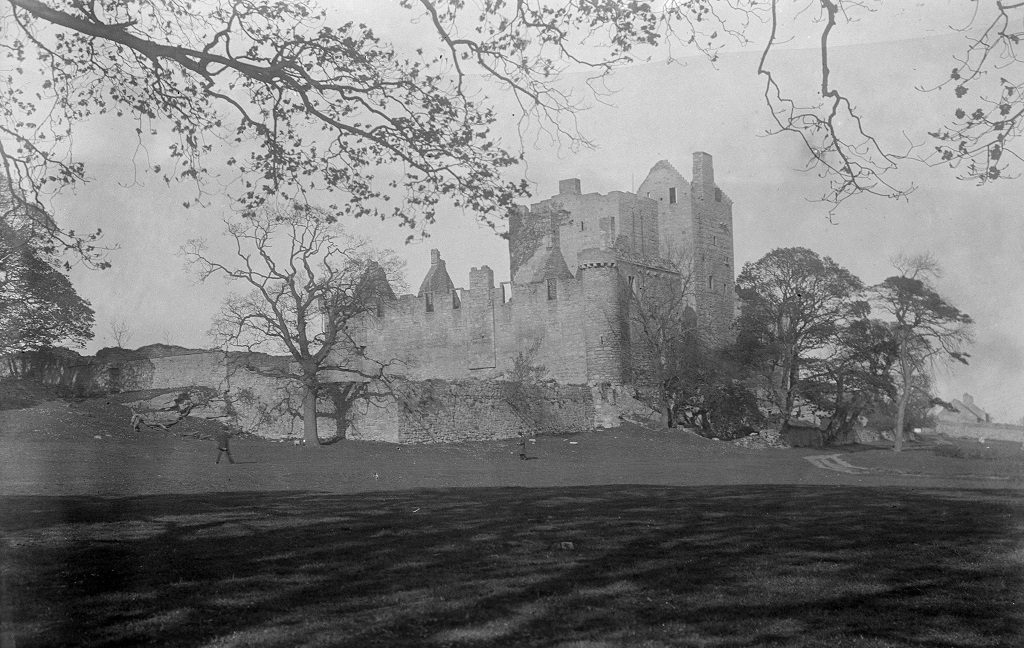The nights are closing in, the clocks have gone back and there’s a spooky feeling in the air: Halloween is upon us once again. So gather round the fireside (or take shelter under the duvet) and join us for three supernatural journeys into Scottish history…
Hunting the Ghost of Craigmillar Castle
We’ll begin our trio of terrifying tales in May 1935, in Niddrie Mains, Edinburgh. Located within the shadow of picturesque Craigmillar Castle, at the time it was one of Edinburgh’s newest housing areas.
But a curious report in The Sunday Post on May 5 revealed details of a much older resident – one that was steadfastly refusing to leave…

Craigmillar Castle, close to Niddrie Mains
Under the headline “Edinburgh Ghost with Spurs” the Post carried the sensational details of a mysterious figure “seen gliding over the fields” near the castle.
It was not the first time that the “supernatural visitant” had made an appearance in the neighbourhood. A year previously, the phantom had caused such a scare that vigilante ghost hunts were organised “in an effort to lay the uneasy spirit”.
The ghost managed to evade capture though, vanishing into the maze-like ruins of Craigmillar Castle whenever the Niddrie ghostbusters made their move.

The fields and lanes around Craigmillar Castle were the ghost’s stomping – or gliding – ground
The most recent sighting, reports the Post, had taken place on a side street leading from Peffermill Road to the castle. While there’s little indication as to the possible identity of the ghost, the report provides plenty of details about its unsettling – and somewhat bizarre – appearance.
The ghost wore “a long dark blue hooded cloak” and had “a mass of tangled black hair which falls over the forehead.” As the headline attests, heavy riding boots with spurs adorned the spooky figure’s feet.
It seems that the spirit wasn’t inclined to make friends with the locals. We hear of evil eyes which “gleam menacingly on the approach of a mortal.”
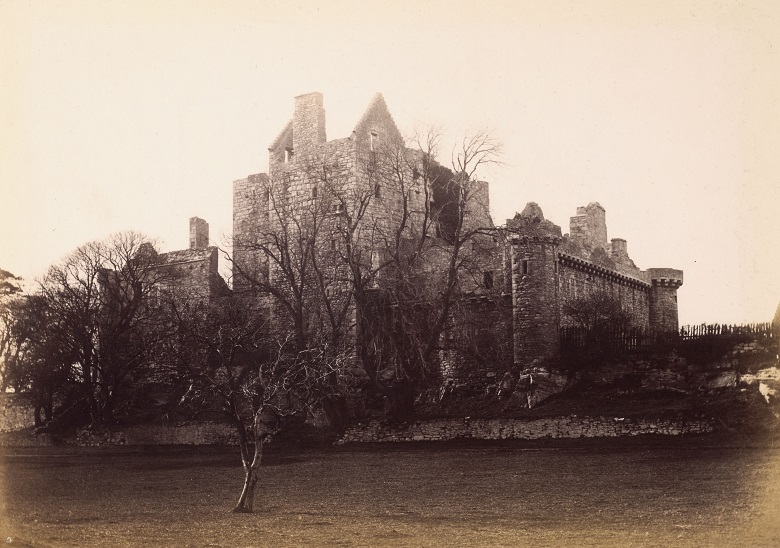
The “Craigmillar Castle ghost” had plenty of hiding places inside the complex historic residence
A fresh ghost hunt was immediately launched by “a number of Niddrie Mains young men” but they found nothing. Another man claimed to have seen “a shadowy being glide round the ruins”. Once again it escaped by “vanishing through an old doorway.”
As far as we know, there’s been no more sightings of the “ghost with spurs” since. Could it still be floating around the many nooks and crannies of Craigmillar Castle?
The Chilling Curse of Cardoness
Cardoness Castle is a well-preserved 15th-century tower house close to Gatehouse of Fleet in Dumfries and Galloway.
Today’s visitors can take in panoramic views from the top of the six-storey stronghold or marvel at the house’s elegant features – but beware! Rumour has it that a curse afflicts the land upon which it is built…
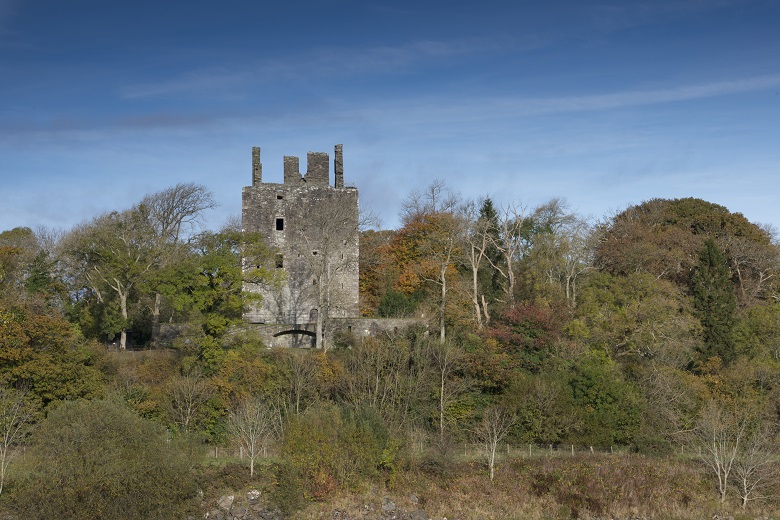
The grisly tale begins with one odious Laird of Cardoness, who was desperate for an heir. Legend has it he threatened his wife that unless she produced a son, he would drown her and all of their nine daughters.
Thankfully a baby boy was born. To mark the occasion, the Laird declared that a grand winter celebration should take place on a frozen loch nearby.
Festivities were in full spring when disaster struck. The ice gave way beneath the party. The Laird and his guests plunged to a freezing, ironic death. The “Cardoness Curse” had begun.
Just one of the Laird’s daughters escaped. She went on to marry one of the notorious, lawless McCulloch clan. They built the existing castle on the “cursed” spot in the late 1400s.
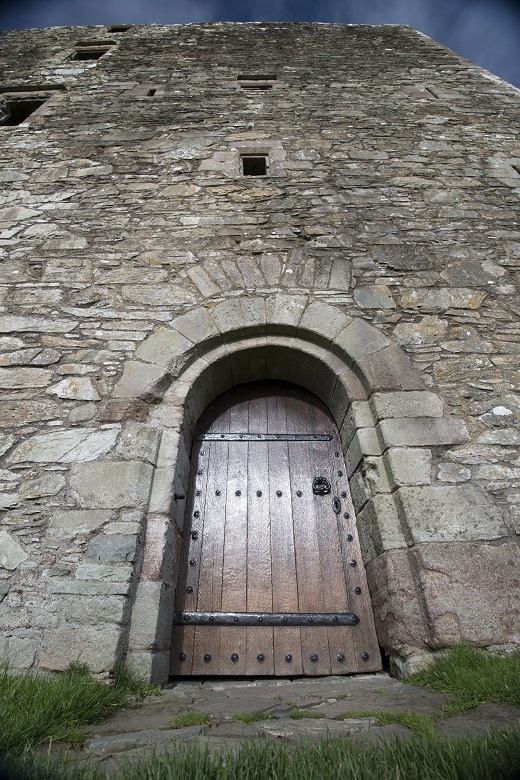
Dare you step across the threshold of “cursed” Cardoness Castle?
The McCullochs were beset by financial hardship and became engaged in a lengthy and bloody feud with the Gordons, another prominent Galloway family. Alexander McCulloch and his son Godfrey committed numerous murderous acts against the Gordons.
The feud came to a head in the late 1600s when the bankrupt McCullochs were forced to mortgage Cardoness. It was acquired by none other than the Gordon family.

The coat of arms of Sir Godfrey McCulloch
Enraged, Godfrey McCulloch shot the new owner, John Gordon, in the leg. John died from his wounds and Godfrey was charged with murder.
He was beheaded on Edinburgh’s Royal Mile in 1697, one of the last victims of the infamous Maiden guillotine. The “Cursed” Castle was abandoned.
There’s only final supernatural twist to this tale. A legend quoted by Walter Scott makes the far-fetched claim that Godfrey was saved from his fate by a gnome that he had done a favour for many years earlier.
Equally as far-fetched is the rumour that Godfrey’s headless body ran 100 yards along the Royal Mile after the execution!
A Night of Terror with “The Grey Paw”
Our final story is brought to us by Victorian folklorist John Gregorson Campbell.
Campbell travelled Scotland in the 1850s and 1860s, collecting a wealth of stories of superstition, second sight and supernatural occurrences. Many were published posthumously in 1900 the epic Superstitions of the Highlands and Islands of Scotland.
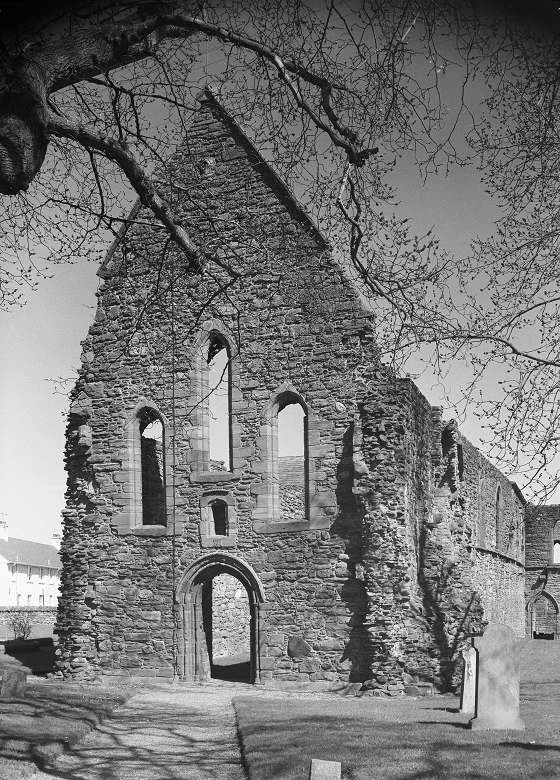
Beauly Priory, John Gregorson Campbell’s setting for “The Grey Paw”
This spooky yarn, best told by candle or firelight, begins way up in the Highlands at “the Big Church of Beauly” where locals had reported unearthly sights and sounds after dark. It was said that those who went to investigate the mysterious goings-on never returned alive.
One day, a courageous (or foolhardy) tailor laid a wager. He would spend an entire night inside the “haunted” church – and there he would sew a pair of hose (socks).
Things went swimmingly until “the dead hour of midnight” when “a big ghastly head emerged from a tomb”. The fearsome figure spoke in Gaelic:
Fhaic thu ‘n t-seann bhò liath ‘s i gun bhiadh, a thàilleir.”
Look at the old grey cow that is without food, tailor.”
“I see that and I sew this,” the tailor replied, hurriedly continuing with his work. But with every breath the tailor took the flesh-less spectre emerged further from the tomb.
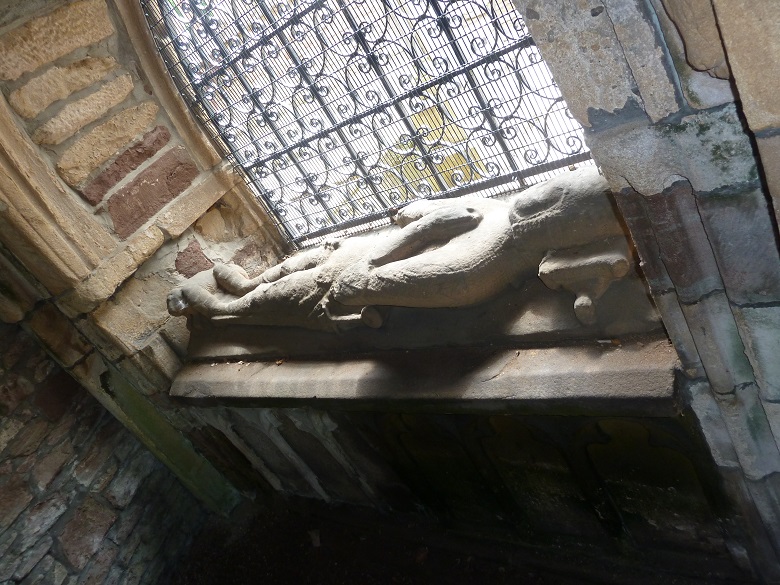
A tomb in Beauly Priory
As each new body part appeared, the ghoul repeated its mantra. “A long grizzled weasand (gullet)” was followed by a “long grey arm” and “a long, crooked shank.” Terrified, the tailor attempted to focus on his work, replying over and over “I see that and I sew this.”
Finally, the ghostly body was complete and it began to reach across the church towards its victim with:
Spòg mhòr liath gun fhuil gun fheòil gun fhéithean ‘s i gun bhiadh, a thàilleir”
“A long grey paw without blood or flesh or muscles or food, tailor.”
Taking a deep breath, the brave tailor put the last stitch into his socks and sprinted for the door. The ghost pursued, grabbing at him with long, bony fingers and wailing “a big grey claw that is without food, tailor!”
Our hero escaped by the skin of his teeth, but not before he was caught on the behind by the phantom claw as he leapt to freedom. A hole in the priory wall made by the claw is said to remain in place to this day.
And what of the traumatised tailor? The wager was won, but his “flesh shook and quivered with terror, and he could cut grass with his haunches as he flew home.”
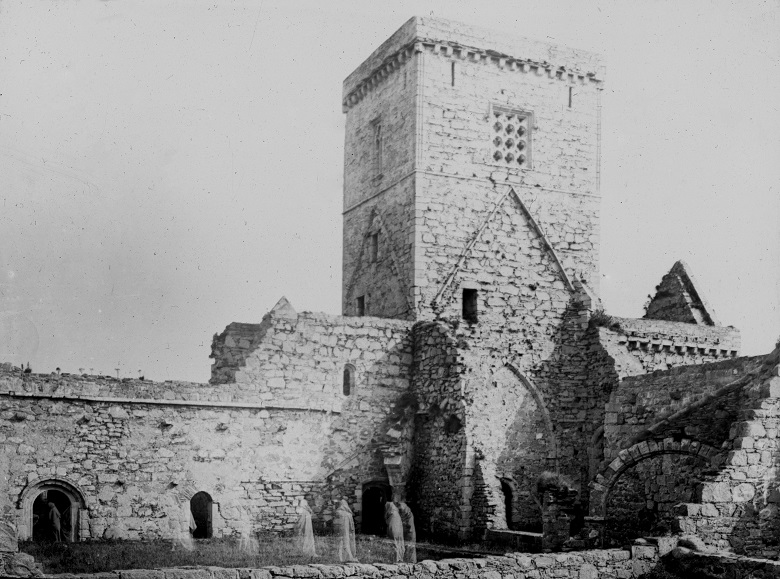
A ghostly archive image of Iona Abbey, another place associated with “The Grey Paw”
According to Campbell, a version of the tale exists “for almost every church in the Highlands”. At Iona Abbey, there was supposedly a Toll an Tàilleir (Tailor’s Hole) where a clothier worked incessantly “until things began to trouble him at night.”
Beauly Priory and Iona Abbey are peaceful havens today. Thankfully, we’ve yet to have any reported sightings of a Gaelic-speaking ghoul, a terrified tailor or his spooky socks!
“The Grey Paw” remains a perfect ghost story for a winter evening. It’s easy to imagine the story being told around the fire in Highland homes, with shadows on the wall being used recreate the terrifying emergence of the ghastly body.
For more Halloween hijinks check out our previous Halloween blogs, covering everything from miniature coffins to mythical water horses! Or you can test your knowledge in our Halloween quiz:

